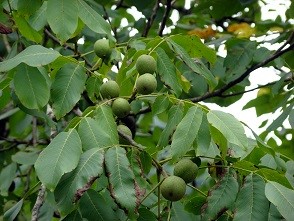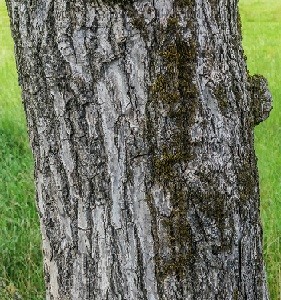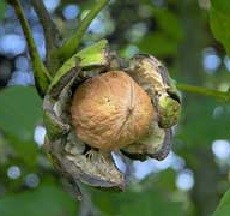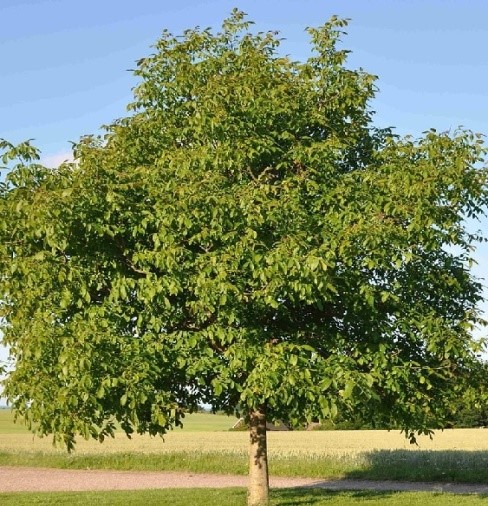Trees
Juglans regia Linn.
Juglans regia Linn.
Description :
A
large, deciduous tree, 15 to 30 m tall with diameters of 1 to 1.5 m. The crown
is broad, spreading and rounded. The leaves are compound, with leaflets 7 to 20
cm long and 5 to 10 cm wide, oval to oblong, pointed and the edges not usually
toothed. The bark is grey becoming darker with age. The younger bark has long
vertical striations that deepen with age. Older bark will also be cracked
transversely. It is monoecious. Male flowers are in bunches 5 to 12 cm long
growing on last year's shoots. Female flowers occur as singles or in two or three
between February and April. The fruit is a fleshy drupe, greenish yellow
spotted, oblong in shape 5 cm long. Inside the drupe is the nut in a hard,
wrinkled shell. The fruiting period is June to October. It coppices at an early
age. The tree is attacked by various fruit and wood borers and is susceptible
to leafy mistletoe. It is generally reproduced from seed but can also be reproduced
by vegetative means. Seed can be successfully cold stored for two years in air-tight
containers. Diameters of 1 m in 60 years have been recorded. It is a slow
growing tree which precludes rapid acceptance by farmers. It has straight heavy
and resilient wood with fine even texture with greyish / brown colour and dark
streaks.
Distribution :
The
tree is native to India, Pakistan, Nepal, Afghanistan, upper Burma, China and
Japan. It is cultivated in many parts of the world because of its nuts. In Pakistan
it is found in Gilgit Baltistan, Dir. Swat, Hazara, Murree Hills, and Azad
Kashmir. It is also planted in gardens and along streets in cities. A
moderately tolerant tree that grows on deep, rich, moist soils, but prefers
moist, shady sites. Its precipitation zone is 750 to 1500 mm/yr or more in a
humid, cool, temperate climate with a temperature range of -10 to 35°C at
elevations between 1000 and 3300 m.
Uses :
An
important and valuable component of the coniferous forest but planting programs
may be needed to preserve it and insure its position as a member of the
coniferous forest. Because of its fruit and high value wood it could be part of
a farm forestry program. Also used as Fruit, gun stocks, furniture, fodder,
wood carving, burls, and medicinal (bark as an anthelmintic, leaves as an
astringent, fruit to cure rheumatism).



